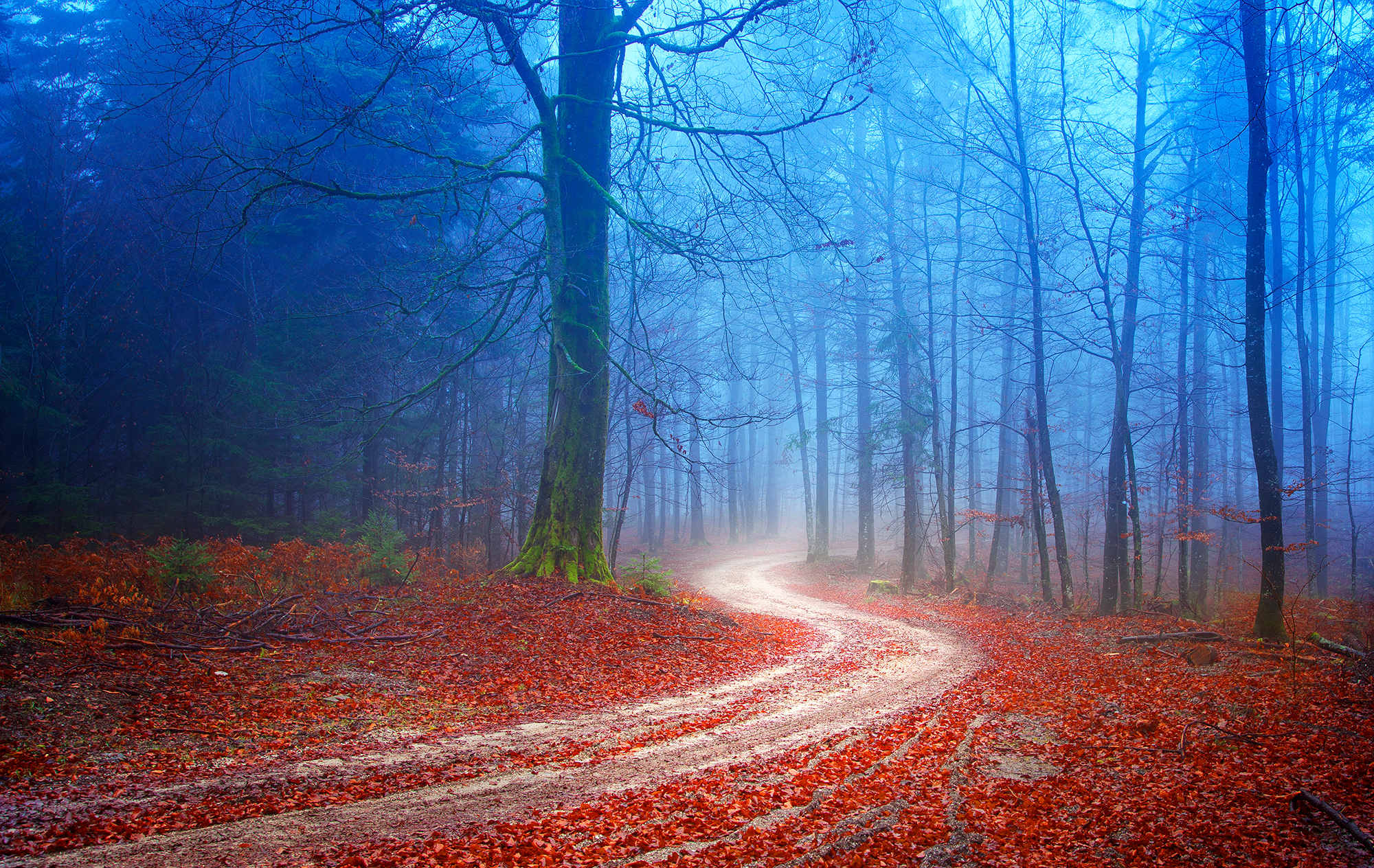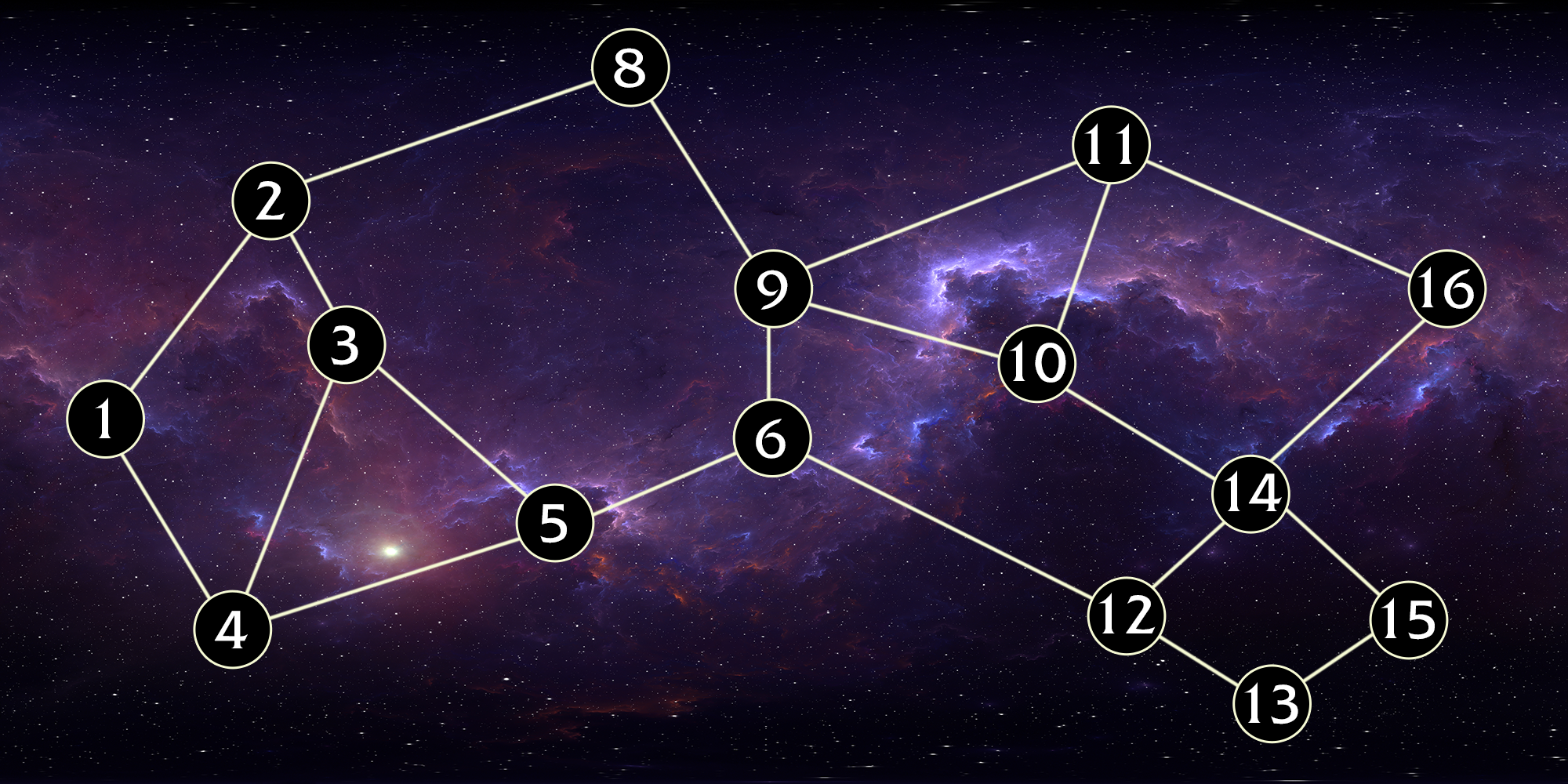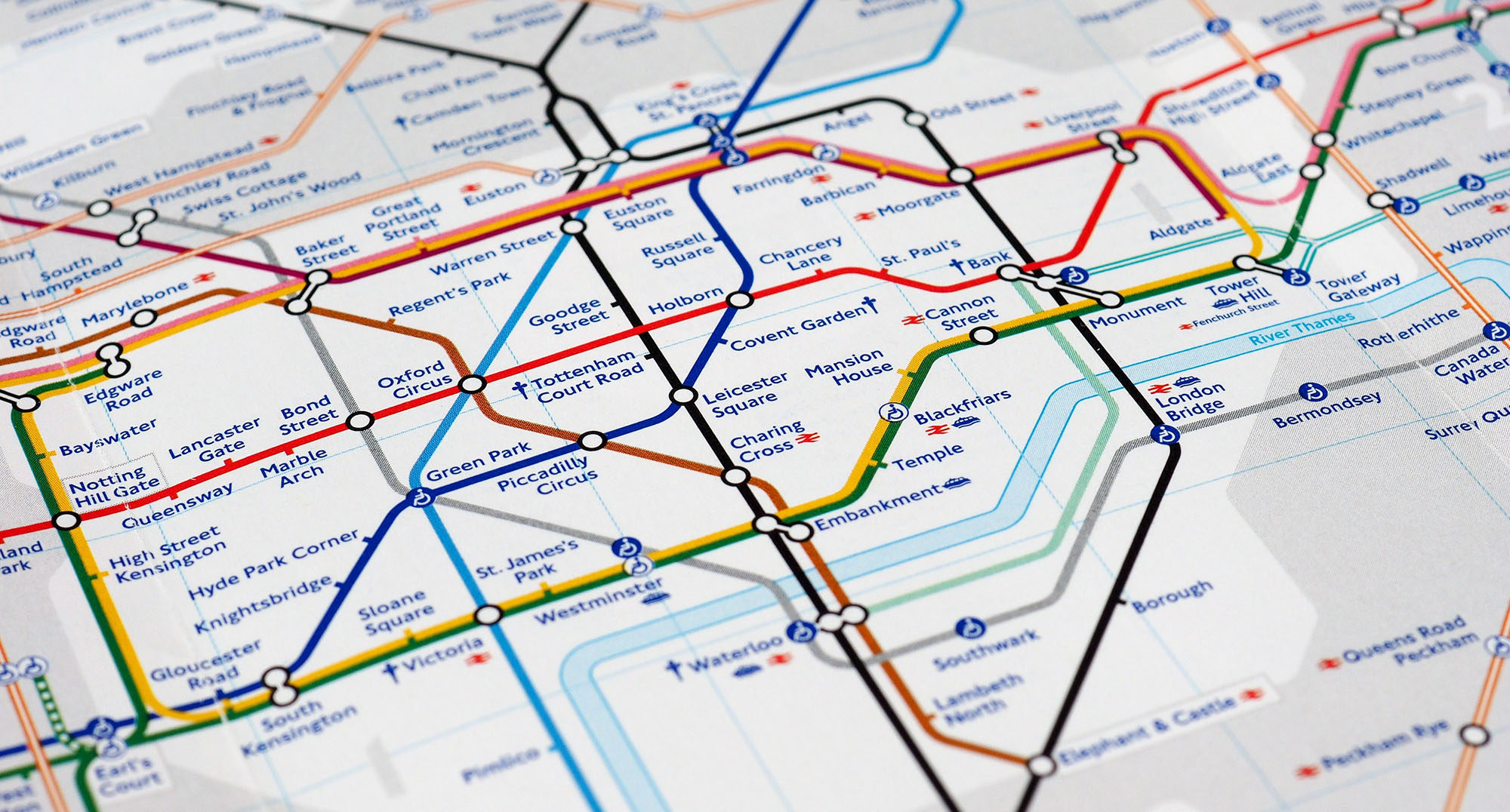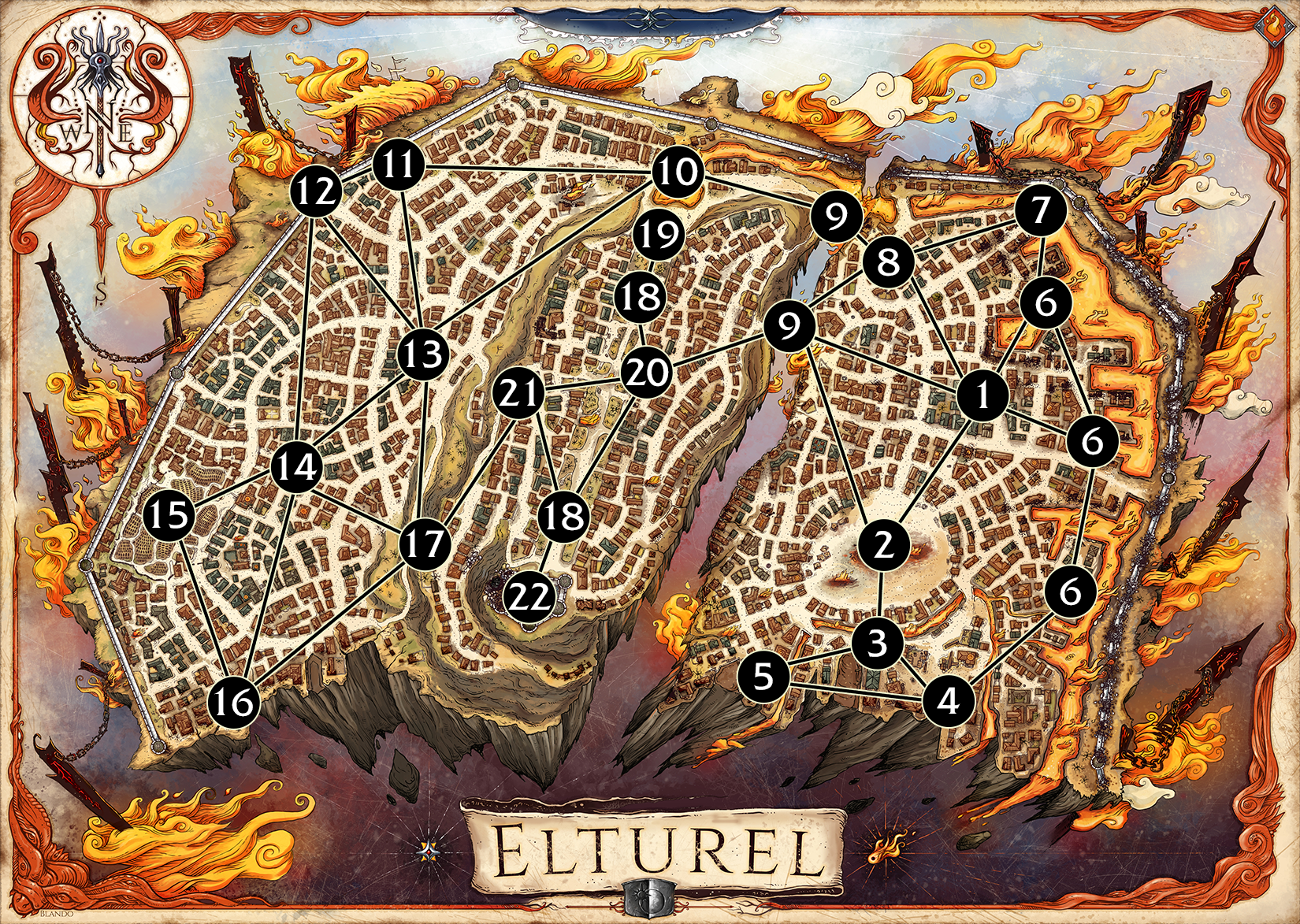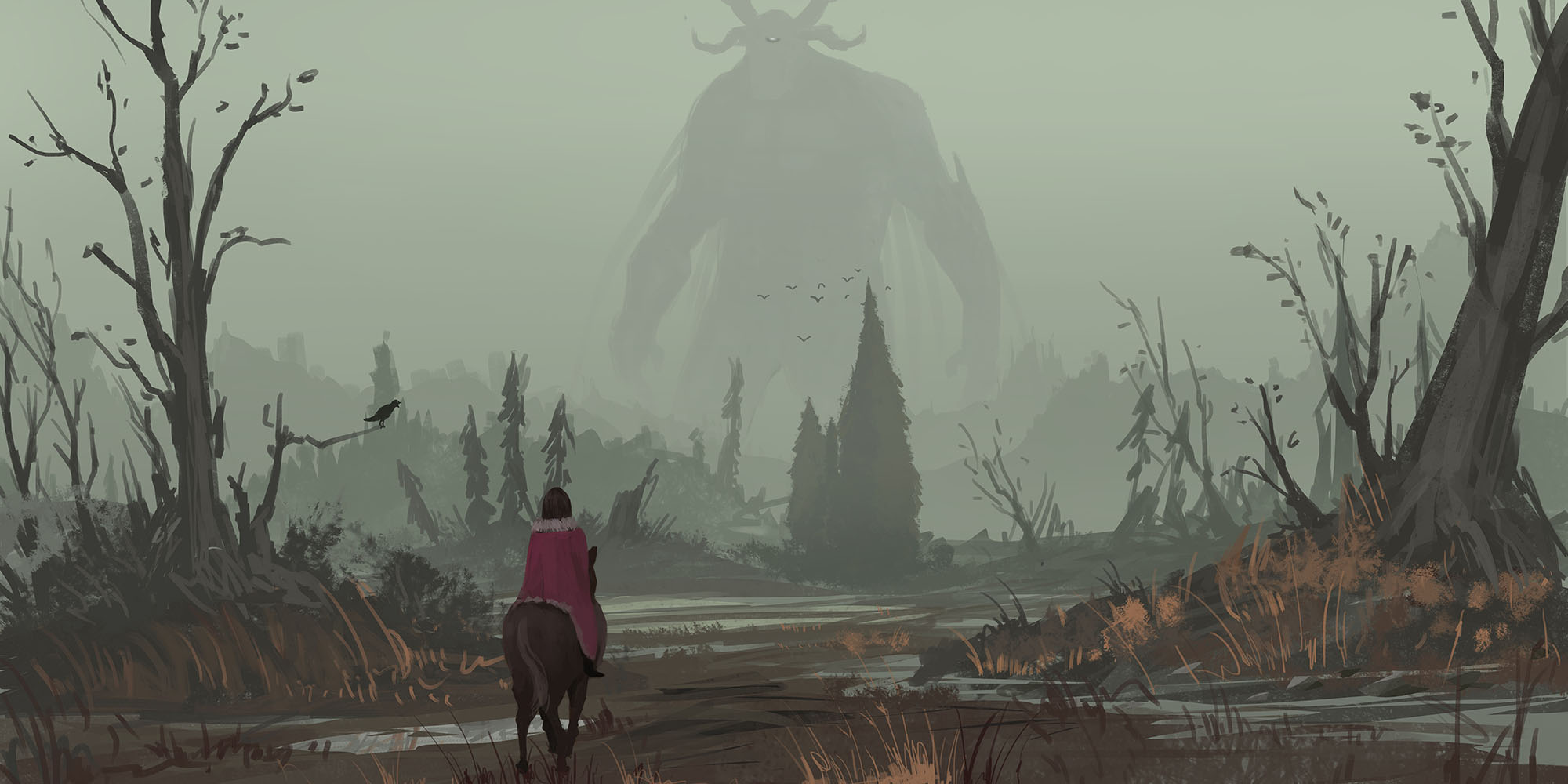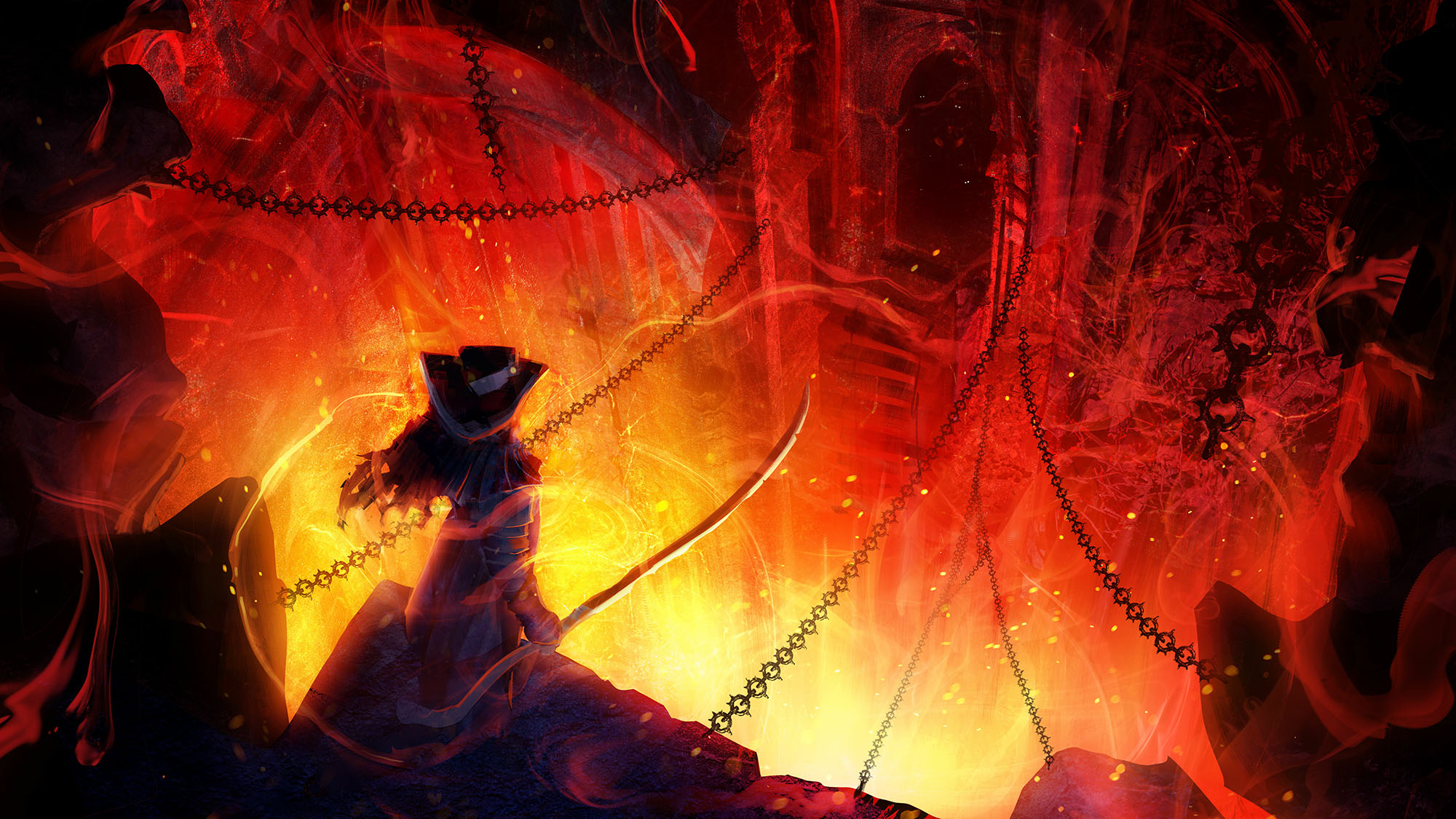
The concept of the depthcrawl was created by Emmy “Cavegirl” Allen for The Gardens of Ynn and The Stygian Library. It’s a method for procedurally generating exploration-oriented pointcrawls with a strong sense of progression into a vast, unknowable domain. Allen, in particular, uses the concept to great effect in creating feyish, non-liminal spaces, but I think it can be put to good effect in almost any number of ways.
WHAT YOU PREP
To create a depthcrawl generator, you need to prep:
- Locations
- Details
- Events
- Encounters
Each of these will be listed on separate random generation tables. The size of these tables, the number of entries appearing on them, and the organization of those entries will depend on both the desired scope of your depthcrawl and the specific depthcrawl procedure you set up (see below). You may also find it useful to create additional procedural generation tools — for example, The Stygian Library has a table of random tomes — but these are not strictly necessary and will depend on the particulars of your scenario.
LOCATIONS are the core element of each point in your pointcrawl. You can go very generic with these, perhaps offering nothing more than a label or a few words of description (e.g., “grove,” “stream,” etc.). But I think you’ll have better results if you provide at least some degree of specificity. A simple example might be something like this:
AN ANCIENT TREE
A tree at least two or three times larger than those which surround it. Its bark is intricately carved with arcane runes which glow blue during the day and crimson red at night. Close inspection reveals that several of these runes have been marred, rendering them unreadable.
But even higher levels of detail are certainly possible, perhaps ranging all the way up to providing a small map of a dungeon, cave, or building.
DETAILS either add to or somehow twist the nature of locations. These might be individual elements (e.g., a lamp-post or Jarcani runes) or they could be broadly thematic (e.g., lurid light or clockwork parts), with the former generally being additions to the scene and the latter usually altering it.
For example, if you combined “abandoned mansion” with “lamp-post,” that probably means that there’s a lamp-post at the mansion — perhaps quite naturally in front of it; or perhaps oddly standing in the middle of the dining room. On the other hand, “clockwork parts” might transform a “forest grove” into a technomantic marvel of mechanical trees and steampunk critters.
EVENTS are active elements that are either taking place in the location when the PCs arrive or which will happen while they are there. You generally want to avoid specificity here, instead indicating a broad type of event, so that events can be repeated again and again — transformed by their immediate circumstance — without the depthcrawl becoming repetitive.
The exception is any element of the setting which should be repetitive. For example, if there are strange crystalline pylons which float throughout the area and periodically send a pulse of light straight up into the sky… well, the arrival of a pylon is probably a good candidate for an event.
Another trick is to use an event to trigger specificity from a different random generator, such as your encounter tables. For example:
TWO FACTIONS ENGAGE
Roll twice on the Encounter Table to determine which creatures are present. Then roll on the Reaction Table to determine what their current relationship is (friendly, uncertain, or hostile).
Or:
MAGICAL GATE OPENS
Roll a random Location to which the gate leads. On a roll of 1, it instead operates as a sphere of annihilation.
ENCOUNTERS are a standard check and table for wandering monsters. You could flesh this out into a more robust generator (adding a reaction check, % lair, or other such things that seem appropriate), but you really want these to be procedural encounters, not designed encounters. You want to be able to inject these denizens freely into any number of situations.
CREATING LOCATIONS
The magic at the core of the depthcrawl is taking a location, detail, event, and (optionally) an encounter and weaving them together to create something unique. So if you prep twenty locations, twenty details, and twenty events, you don’t end up with twenty options, you end up with eight thousand options.
And really it’s even more than that because there are lots of different ways to interpret each combination of elements.
For example, let’s say you roll up:
- Location: Ancient Tree
- Detail: Clockwork Parts
- Event: Magic Gate Opens
You might decide that the interior of the tree is laced with strange clockwork parts (which you can see where a bolt of lightning split the trunk long ago) and the runes are part of the powerful technomantic construct which can be used to open a magical portal.
Or, alternatively, you might decide that a strange clockwork device has been attached to the side of the tree and is very carefully slicing out each arcane rune from its bark one at a time. They are being collected by (roll an encounter) strange warriors wearing insectile-helmets, who return via a magical portal that opens while the PCs are investigating the tree.
DEPTH
The core concept of the depthcrawl is that the rolls on these random tables are affected by depth, with the results of the checks sliding across the table based on how far the PCs have progressed into the depthcrawl.
Note: Event rolls are often not affected by depth because they typically flow depth-affected content — i.e., random encounters — into a generic event type.
Depth itself is an abstract concept, representing how far the PCs are from where they started (the entrance of a labyrinth, the interplanar gate, their base camp, the silver skein that lies on the border of the afterlife, etc.): You can think of it as literal depth beneath the earth (i.e., similar to how you descend from one level of the dungeon to the next), but that’s probably more deceptive than not. Depth in a depthcrawl could just as easily refer to how far you’ve journeyed into the Venom Abyss of Planegea, for example.
Regardless, the further you get into the depthcrawl, the larger your depth becomes.
The most basic version of a depth check is a die roll + depth. For example, 1d20 + depth or 1d8 + depth. In setting these values, you’ll want to consider how deep a typical adventuring party will go and how many entries you want to key to each table.
For example, let’s say you see a typical adventure in the Venom Abyss going to a depth of 10-15 locations. If you’re rolling 1d20 + depth, that means you’ll need to key at least 35 entries (the maximum roll on the die + the expected maximum depth of 15).
You’ll also want to think about the cap value (i.e., 35+ if you’re keying for 1d20 + 15 depth). Broadly speaking, you can either set a maximum effective depth (i.e., even if you go past depth 15, you just roll as if depth were 15) or you can have some sort of endgame result, such as:
- You arrive at Blood Mountain in the heart of the Venom Abyss.
- You have passed into the Underdark or out the far side of the forest.
- Reality itself begins to fray and break apart as you journey further into the Madlands of the Feywild.
You can also see how the group’s current depth creates a strata. If you’re rolling 1d10 + depth, for example, and you’re at depth 10, then you’ll have a “strata” of possible results from 11 to 20. Each change in depth changes the range of possible results, creating a “definition” of that strata that obviously overlaps with other depths: depths 10 and 11 are largely identical, but the difference between depth 5 and depth 10 is quite large, and the difference between depth 5 and depth 15 is complete.
Note: Hey! Couldn’t you just do a completely separate table for each individual depth so that every depth would be completely different from every other depth?
Sure! What you’re describing is actually quite similar to the dungeon level encounter tables from the original 1974 edition of D&D, but you may not find it particularly effective when used as part of a depthcrawl: Dungeon levels, for example, are filled with lots and lots of rooms, so you’ll use the level-based encounter tables repeatedly. In a depthcrawl, however, the PCs are almost always moving from one depth to another after just a single location, so you’d use all of your specialized tables only once-ish.
The other value you can play with is depth increment. Instead of increasing depth by just one point, you might instead increase it by 4 points (or 2 points or 5 points or whatever). The effect, obviously, is to more rapidly shift the group through the distinct strata of the depthcrawl. (Which can have the potentially negative result of either shortening the depthcrawl or requiring you to key much more material to handle much larger depths.)
Another technique you might consider is a depth pool. Instead of making a die roll + depth, you could instead roll a number of dice equal to the depth. For example, at depth 4 you might roll 4d6. This has the effect of rapidly increasing the average depth result while keeping lower results possible. (For example, each additional d6 of depth increases the average result by 3.5 and the maximum result by 6, but the minimum result by only 1. If you calculated a depth increment from the average of the roll, 4d6 would be equivalent to die roll + 14. But whereas die roll +14 has a minimum result of 15, the 4d6 roll obviously has a minimum result of 4.)
Note: You could mix-and-match different depth checks for different elements of the depthcrawl. For example, maybe you roll 1d20 + depth for locations, but roll 1d6 per depth for encounters, so that the location types throughout an area remain fairly constant, but the danger of encounters shifts rapidly.
RUNNING THE DEPTHCRAWL
When it comes to running the scenario, you can think of a depthcrawl as a kind of “cap system” for a pointcrawl: The core scenario structure is the pointcrawl itself. The depthcrawl is mostly added on top of that procedure in order to generate the pointcrawl map through play.
Start by creating the ENTRANCE:
- Make a depth check on the Locations (You start at Depth 0.)
- Make a depth check on the Details
- Roll on the Events
This is the location where the PCs enter the depthcrawl.
On each navigation turn, the PCs will choose one of three moves:
If they STAY, they are remaining in their current location. Follow your normal procedures for that location.
If they GO DEEPER:
- Increase the group’s depth by one depth increment.
- Draw a path between their current location and the new location.
- Make a depth check on the Locations
- Make a depth check on the Details
- Roll on the Events
- Make an encounter check.
If they GO BACK, they travel along a path they’ve already explored to a location they’ve previously visited:
- Set the group’s depth to the established depth of the location.
- Make an encounter check.
You can choose to make this a player-known structure by telling the players that these are their three navigational options (stay, go deeper, go back), but they’re structurally broad enough that you can run the depthcrawl as a player-unknown structure by simply interpreting their navigational declarations according to the appropriate move.
(For example, if they say, “Let’s head down the river and see where it leads,” that’s Go Deeper. If they say, “Let’s search the mansion,” that’s Stay. If they say, “We should go back to the Old Mill,” that’s Go Back. Possibly multiple Go Backs, which you can resolve one at a time, depending on how many points they need to pass through to retrace their steps.)
A key thing to remember is that the depthcrawl is designed to cover a vast and enigmatic territory. In general, it should be assumed that there are any number of potential ways that PCs could enter or leave a location. The fact that they only have a binary choice (go deeper or go back) is not reflective of every location being a chokepoint; it’s that in the absence of navigational information the choice of direction is arbitrary.
As they explore, of course, they will be gaining navigational data (i.e., the paths which connection locations), and will then be able to make meaningful navigational choices.
Go to Part 2: Advanced Options

